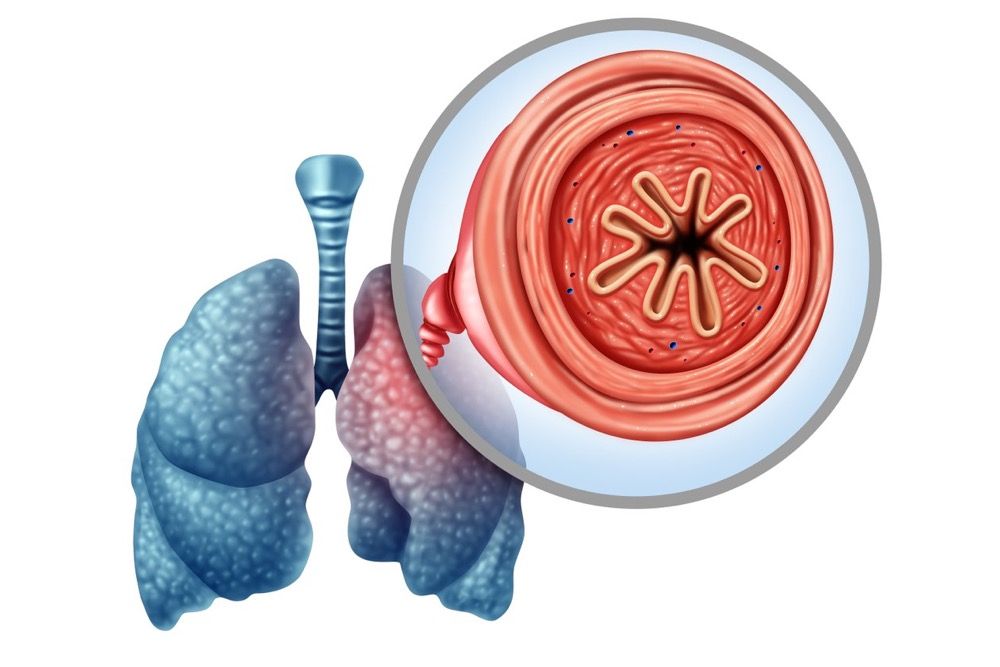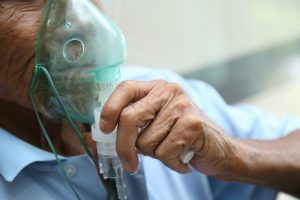You may know that smoking cigarettes or breathing irritants can cause lung cancer in some people, but these two things can also cause chronic obstructive pulmonary disease (COPD). (Learn More) Thankfully, COPD can be successfully managed if it is caught early. (Learn More)
COPD is the combination of both chronic bronchitis and emphysema. Patients who are diagnosed with this ailment usually have both of these conditions, but one may be more prevalent.
Your doctor can start treatments to manage COPD once a diagnosis is confirmed. Currently, there is no cure for the disease, but antibiotics, inhalers, and other therapies or lifestyle changes can help you live a healthy life. (Learn More)
Patients can expect an improved quality of life if COPD is caught early.
COPD Symptoms
Monitoring your body for symptoms is key to diagnosing COPD early. Healthline reports that there are four symptoms that can alert you to COPD.
- Fatigue: You may feel excessively tired or like you no longer have as much energy as before. If you were active, you may feel like you have less stamina.
- Continuous coughing: Your body involuntarily causes you to cough to expel mucus and clear your respiratory tract. This protects you from irritants like cigarette smoke. A chronic cough is often one of the first indications that you may have COPD.
- Breathlessness: Also called shortness of breath, this happens when your lungs have to work harder to do things that were once easy for you. You may feel shortness of breath doing routine things like walking around the block or up some stairs.
- Production of excess mucus: Your body starts producing mucus or phlegm to get rid of irritants it wants to keep out. Irritating chemicals or exposure to tobacco smoke are often the cause of excess mucus.
It is vital to speak with a health care provider if you are experiencing these symptoms.
Severe Symptoms of COPD
If COPD progresses, there are other symptoms that indicate later phases of the illness.
- Decrease in appetite along with weight loss: As COPD progresses, you may move less because you are tired. This could lead to a decrease in appetite, and you may lose weight unintentionally. Loss of appetite could also cause malnourishment, which can worsen COPD.
- Inflammation (swelling): COPD often causes your body to become more inflamed. This may lead to swelling in your ankles, feet, or legs, especially if your case is more serious.
- Cachexia (muscle atrophy). People with chronic diseases of all kinds may experience weight loss that causes them to lose significant muscle mass.
The Four Stages of COPD
COPD is broken down into four stages.
- Stage 1: Symptoms are mild enough to go unnoticed, but they can include mucus or cough that can easily be credited to something else.
- Stage 2: Your cough and mucus production might increase, and you may start experiencing breathlessness here. Most people get medical help as these symptoms arise.
- Stage 3: At this stage, COPD is severe, and it is obvious that your airway is in ill health. Coughing and other symptoms of COPD worsen. You may feel more tired, your chest may feel uncomfortable, and physical activity might be difficult at this stage.
- Stage 4: This is COPD at its most severe. Your quality of life is likely to change drastically, and you are at risk of experiencing respiratory failure or other complications. One associated complication is failure of the right side of the heart. Symptoms at this stage can become fatal.
Effective Treatment Options
Despite the bleak outlook, COPD can be managed effectively. The American Lung Association says that your doctor will ask about your symptoms, lifestyle, and family history of respiratory issues.
You should also expect an exam and laboratory examinations in order to confirm a diagnosis of COPD. Once your doctor knows the stage of COPD you are at, you may be given the following treatments:
- Bronchodilators: These medications open up your airways so you can breathe more easily. They are available in short-acting or long-acting versions.
- Nutritional support: Loss of appetite and unintended weight loss affect many people with severe COPD. Nutritional counseling can help to ensure patients get all the nutrients they need.
- Inhaled steroids: Mayo Clinic explains that these medications can manage or prevent flareups when they occur. They decrease inflammation.
- Oral corticosteroids: This medication may be appropriate for patients with COPD cases that are more severe. They are frequently prescribed for one to five days to improve symptoms.
- Antibiotics: These can address bacteria that causes influenza, bronchitis, or pneumonia, which can worsen symptoms of COPD.
- Phosphodiesterase-4 inhibitors: This is a new option that decreases inflammation, making it easier for you to breathe.
Severe cases of COPD may receive additional help.
- Supplemental oxygen: This could help patients whose oxygen levels are low. It assists with shortness of breath.
- Pulmonary rehabilitation: This is beneficial at all COPD stages, and it can strengthen your lungs.
Lifestyle Changes That Could Help You
In addition to medical treatments, lifestyle changes can help you better manage COPD, according to the University of Pittsburgh Medical Center.
- Smoking cessation: Tobacco smoke is a known irritant, and quitting smoking benefits patients at all stages of COPD. It is also important to avoid being around chemicals that irritate your lungs and to stay away from fireplaces.
- Regular exercise: Mayo Clinic advises that regular exercise helps your lungs become stronger. If you have difficulty with engaging in exercise, ask your doctor for suggestions.
- Nutrition: A nutritious diet is imperative to a strong immune system. Focusing on a healthy diet can also assist you if you have recently lost weight as a result of COPD.
- Airway care: Drink plenty of water to move mucus along, and use a dehumidifier.
- Breathing exercises: Your doctor can instruct you on breathing exercises to strengthen your lungs’ stamina. These will help you to feel more comfortable as you breathe.
Frequently Asked Questions
What are the causes of COPD?
COPD is mostly associated with smoking tobacco, but exposure to other irritating chemicals can also be a cause. It is the combination of both emphysema and chronic bronchitis, but both conditions may not present themselves equally.
What are some telltale symptoms of COPD?
Early stage symptoms include increased mucus (phlegm), persistent cough, wheezing, and shortness of breath. Symptoms of late-stage COPD include discomfort in the chest area, fatigue, swelling and loss of appetite accompanied by weight loss.
What treatment options are available for COPD?
Inhaled and oral medications that decrease inflammation are the most common treatments. COPD patients with severe symptoms may also receive oxygen, pulmonary strengthening, and even antibiotics. Lifestyle changes along with treatment can vastly improve your outlook.
References
COPD. (August 11, 2017). Mayo Clinic.
What Are the Early Signs of COPD? (September 20, 2018). Medical News Today.
Early COPD Symptoms. (October 13, 2016). Healthline.
Symptoms of Chronic Obtrusive Pulmonary Disease (COPD). (April 27, 2019). Verywell Health.
Diagnosing and Treating COPD. (February 14, 2019). American Lung Association.
9 Tips to Retain Lung Function With Stage III COPD. (May 4, 2019). Verywell Health.
Understanding End-Stage COPD. (December 6, 2018). Verywell Health.
Recognize the Stages of COPD and How to Treat It. (February 12, 2018). University of Pittsburgh Medical Center.



